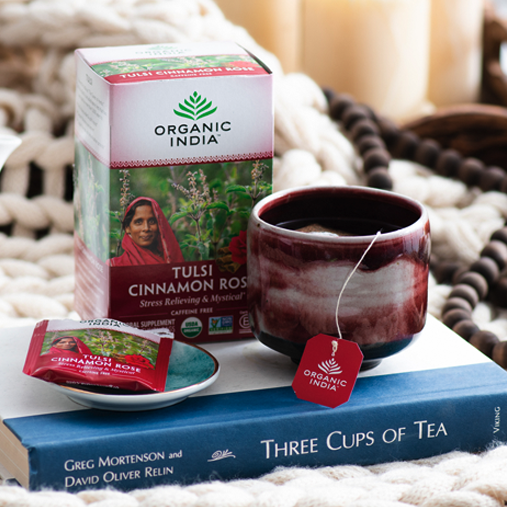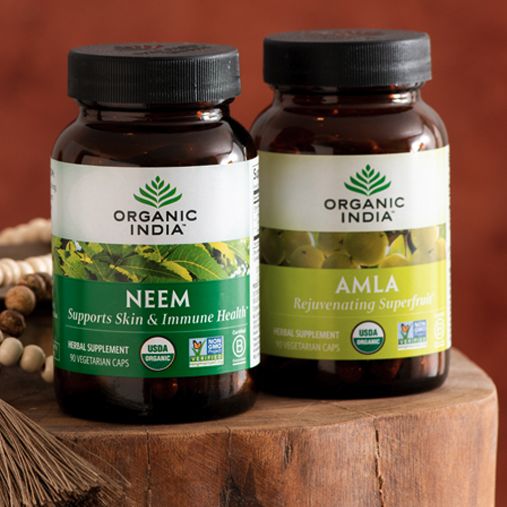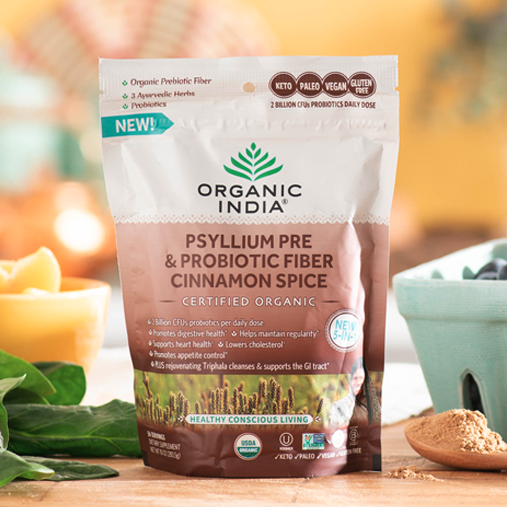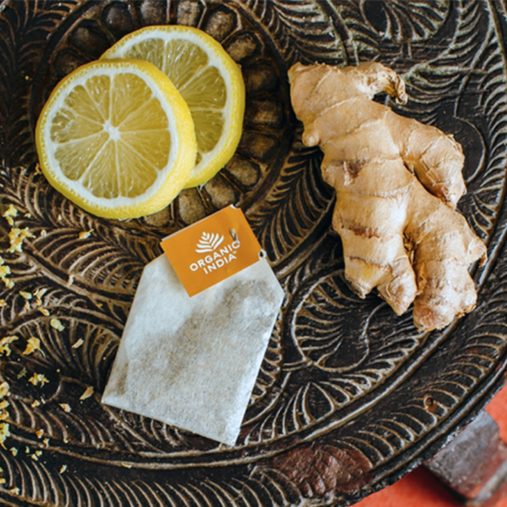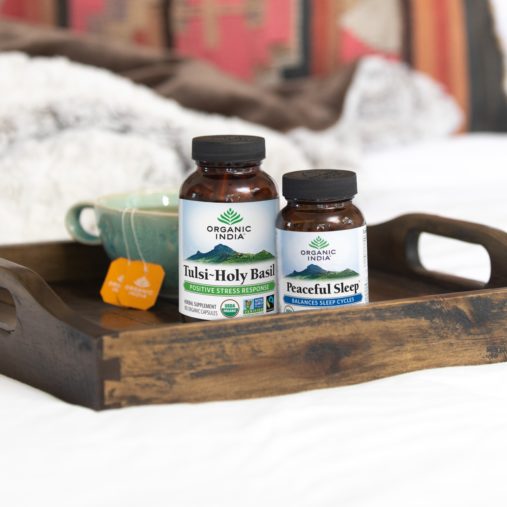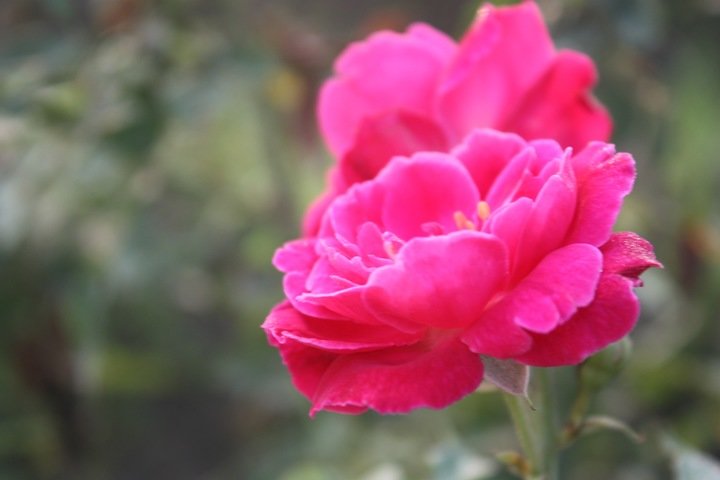Back
Ancient traditions, including Shamanic and Ayurvedic models, regard all things in all “kingdoms,” — animal, mineral, and vegetable — as having distinct, enlivening energy signatures, or “spirits.”
In Ayurveda, these energy signatures, viewed as types of life force, are called “prana.” Like “chi” in Chinese medicine, these energies are intrinsic to everything in existence. While modern science has identified millions of distinct genetic combinations, so does prana manifest in ways unique to each living thing.
Rose: The Ayurvedic King of Flowers
The ancient Vedics called the rose the “King of Flowers.” Seen as corresponding to the physical heart, roses continue to be used in Ayurvedic formulas to and calm and balance the heart. The most commonly used rose in Ayurveda, Rosa Centifolia, is called Shatapattri in Sanskrit, meaning “one hundred petals.”
Ayurveda identifies three doshas, or physical predispositions, based on combinations of the elements fire, water, earth, air, and ether. The pitta dosha is predominantly fire with the addition of some of the water element. Pitta’s fiery nature, when unchecked, can lead to physical inflammation along with anger and frustration. Ayurvedic practitioners suggest using rose formulas or teas to relieve stress and irritability and calm turbulent emotions. They believe that rose-based infusions have the ability to transform anger to forgiveness.
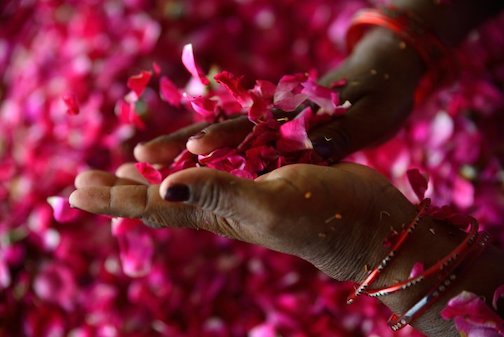
Ayurvedic practitioners suggest using rose formulas or teas to relieve stress and irritability and calm turbulent emotions.
The Subtle Energy and Spirit of Rose
Now that scientific instrumentation can detect more and more subtle frequencies, research confirms that everything in existence has a unique electromagnetic signature. In 1992, researcher Bruce Tainio invented instrumentation that could detect precise electromagnetic bio-signatures.
Tainio explored bio-electric energetic plant signatures, and discovered that of all the species he tested, roses had the highest frequency at 320 MHz. As a comparison, lavender came next, with a frequency of 118 MHz. In this case, the higher the frequency, the more refined the plant energy.
In the 1930s, a British medical doctor, Edgar Bach, sought methods to cure underlying imbalances in the body that lead to health issues. He was convinced that energetic distress led to physical suffering just as night follows day. Bach devoted himself to finding ways to heal troubled souls to prevent physical woe.
Ignoring derision from his medical colleagues, Bach explored homeopathy and other alternative modalities. He moved on to studies of native plants growing in the Welch and English countrysides. This led to his method of formulating energetic remedies from wildflowers and other plant species. Bach’s original 38 remedies became the foundation of the Bach Flower Remedy system available today.
In regard to Bach’s rose flower remedy he wrote, “This remedy is for those who without apparently sufficient reason become resigned to all that happens, and just glide through life, take it as it is, without any effort to improve things and find some joy. They have surrendered to the struggle of life without complaint.” He suggested his rose essence as a means to recover a sense of the joy of life.
Harnessing the Benefits of Roses
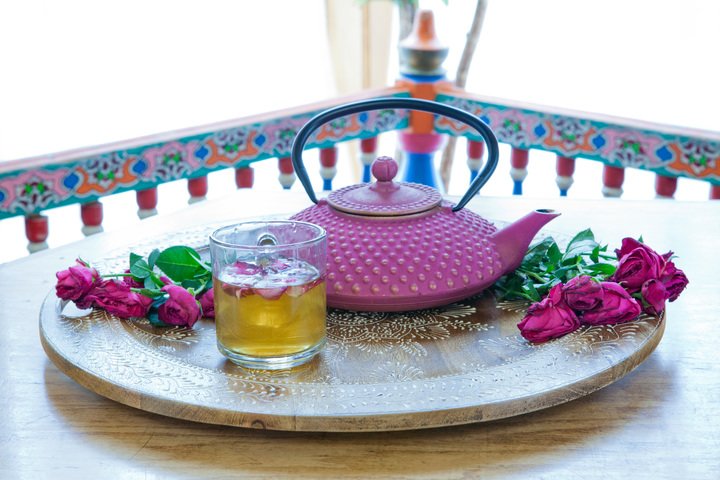
It’s easy to bring the health-giving properties of roses into your life, but it’s a wise choice to use rose-based products that are free of pesticides and contaminants. Products made with organic roses are preferable.
Organic India’s Sweet Rose Tea is an infusion of Tulsi, also known as Holy Basil, and rose. Organic India’s roses are sourced from the company’s Bhrindavan organic farm near Lucknow, India. Our rose petals are also found in our invigorating Tulsi Cinnamon Rose tea.
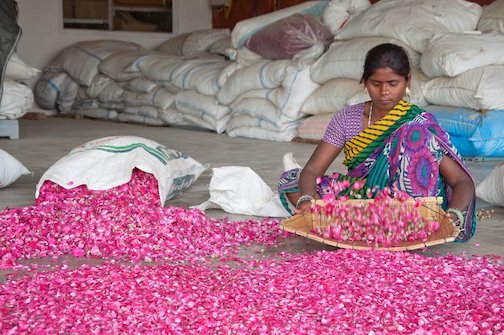
Disclaimer: This content is not intended to provide diagnosis, treatment or medical advice. Content provided on this site for informational purposes only.
